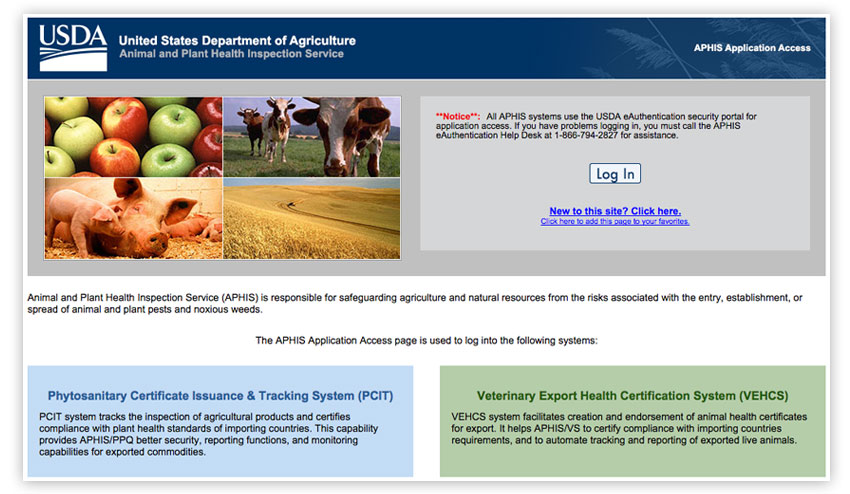Lesson 3: The Future of Certification
Topic 1: Technology-aided Certification
For many years now, all phytosanitary certification has been accomplished using a hard copy, physical paper format. As you can imagine, this method has the potential to slow movement of goods and cause other trade headaches. In this topic, you will discover some of the electronic methods a few countries are testing in order to move away from using paper certificate copies.
Objective:
- Participants will see examples of various ways countries are trying to digitize the phytosanitary certificate.

Electronic Exchange
Phytosanitary certification continues to evolve in order to meet the needs of a rapidly changing and often more unified world. As more countries move into a digitized approach to conducting business, many new phytosanitary resources are being created. In March of 2015, the Commission on Phytosanitary Measures (CPM), the governing body of the IPPC, agreed to develop a global system of electronic phytosanitary certificates. This e-phyto system will allow for secure electronic exchange of certificates between the NPPOs of trading partners. This goes far beyond simply emailing a PDF of a phytosanitary certificate. E-phytos will encourage adherence to international standards and eliminate fraudulent certificates. It is also expected to reduce cost from the current paper-based system. The CPM has requested funds through the World Trade Organization (WTO) to build capacity in developing nations and enable them to join e-phyto on a gradual basis.
IPPC
The IPPC is developing a program to provide a digital way to send official documents, called eCert (electronic certification). The IPPC is currently reviewing and revising data requirements based on International Standard for Phytosanitary Measures (ISPM 12) agreement. The IPPC has some specific goals and standards that need to be met in order to make the electronic transmission program viable. Here are some of the objectives and tasks associated with developing a successful, international program.

- International standardization, which ensures consistent data interpretation and conformance around the world.
- Fraud prevention, so that there is a method that allows only authorized NPPO officials to submit and use electronic documents. The system must have procedures to reduce the likelihood of fraudulent certificates and illegal entry of commodities.
- Technology adjustments to ensure that the underlying technology meets international security requirements and allow for best-in-class mature technological changes.
Realistically electronic certification will not be available for some time for most developing nations. Even for developed nations with sophisticated export systems the move to eCert will take time. The IPPC steering group has developed a few questions for discussion that NPPOs considering the move to electronic certification should be asking.
- What is my NPPO’s biggest constraint to being able to move to electronic certification?
- Does my NPPO have domestic legislation or regulations that would present a barrier to electronic certification, e.g., requirements for paper certificates, specific formats for certificates, or original signatures?
- If you established a national electronic certification system, how would you cover the costs?
- Government funding?
- Cost recovery from exporters?
- Do you have the legal power to cost recover from exporters?
- If a basic generic electronic system to exchange certificate information was available to NPPOs, would your NPPO want to or be able to use it?
USDA and PCIT-eCert
The USDA is currently beta testing its own electronic certification system through PCIT with some of its core trading partners. This process will eventually replace the existing paper-certification process by allowing information to be directly exchanged between NPPOs. The goals and objectives for the PCIT-eCert system are very similar to the ones voiced by the IPPC:
- provide credibility, integrity, security, and reduce fraud,
- expedite and facilitate trade, and
- reduce certification costs to its customers.
The biggest question is “Will PCIT-eCert eliminate paper certificates?” In the short term, paper certificates will still accompany agricultural shipments. Paper certificates are used for more than just phytosanitary certification; they are also used for letters of credit and to identify similar shipments of identical commodities. There is also the challenge of changing the culture of how things have been done for many years. Change takes time, but in the long term, electronic exchange without paper certificates is expected to become the norm.

There are many challenges to creating an electronic phytosanitary exchange that will work globally. However, it is worth pursuing in order to improve our ability to facilitate quicker, cleaner trade of goods.
To continue, select Lesson 4 from the Lesson menu above or click here.